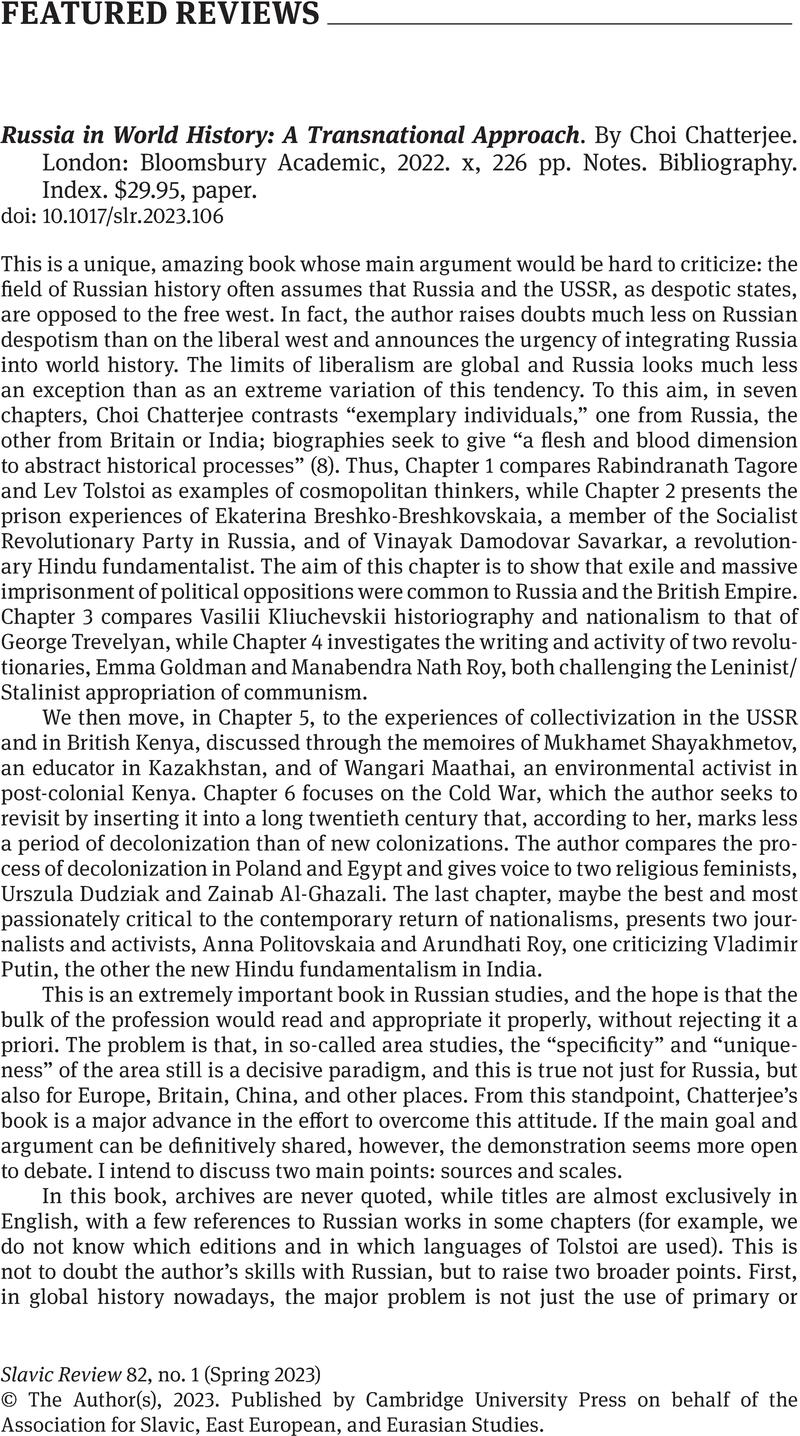No CrossRef data available.
Article contents
Russia in World History: A Transnational Approach. By Choi Chatterjee. London: Bloomsbury Academic, 2022. x, 226 pp. Notes. Bibliography. Index. $29.95, paper.
Review products
Published online by Cambridge University Press: 03 August 2023
Abstract

- Type
- Featured Reviews
- Information
- Copyright
- Copyright © The Author(s), 2023. Published by Cambridge University Press on behalf of the Association for Slavic, East European, and Eurasian Studies
References
1. Among the others: Moon, David, The American Steppes: The Unexpected Russian Roots of Great Plains Agriculture, 1870–1930 (Cambridge, Eng., 2020)CrossRefGoogle Scholar; Lieven, Dominic, Empire: The Russian Empire and its Rivals from the Sixteenth Century to the Present (London, 2003)Google Scholar; Miller, Aleksei, ed., Rossiiskaia imperiia v sravnitel´noi perspektive: Sbornik statei (Moscow, 2004)Google Scholar; Miller, Alexei and Rieber, Alfred J., eds., Imperial Rule (Budapest, 2004)CrossRefGoogle Scholar; Matsuzato, Kimitaka, Imperiology: From Empirical Knowledge to Discussing the Russian Empire (Sapporo: 2007)Google Scholar; Stanziani, Alessandro, After Oriental Despotism (London, 2014)Google Scholar, Bondage (New York, 2014), Eurocentrism and the Politics of Global History (New York, 2016), and Labor at the Margins of Empire (New York, 2018); Morrison, Alexander S., Russian Rule in Samarkand, 1868–1910: A Comparison with British India (Oxford, 2008)CrossRefGoogle Scholar. See also the special issues on this topic in Kritika: Explorations in Russian and Eurasian History: “Subjecthood and Citizenship, Part II from Alexander II to Brezhnev,” issue 7, no. 3 (Summer 2006) and “Models on the Margins: Russia and the Ottoman Empire,” issue 12, no. 2 (Spring 2012).
2. Stanziani, , Labor on the Fringes of Empire; Capital terre (Paris, 2021)Google Scholar.
3. Levi, Giovanni, “Les usages de la biographie,” Annales. Économies, Sociétés, Civilisations 44, no. 6 (1989): 1325–36CrossRefGoogle Scholar.
4. De Vito, Christian and Garritsen, Anne, Micro-Spatial Histories of Global Labour (London, 2018)CrossRefGoogle Scholar. See also the special issues devoted to global microhistory in La microhistoire globale: affaire(s) à suivre, Annales. Histoire, Sciences Sociales, vol. 73, 1 (2019); “Global History and Microhistory” in Past and Present, vol. 242, supplement 14 (November 2019).


